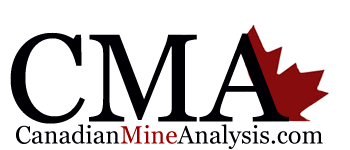Freewest Resources Canada and Arianne Phosphate
Freewest Resources and Arianne Phosphate are two “asset value situation” stocks that we were invested in during the last several years; both turned out to be successful. The key was that both were quite undervalued in what they owned (resources in the ground) in their asset holdings. Our analysis indicated that they were selling at prices substantially below their reasonable asset values. Is it a Rare occurrence with small cap stocks ? No, it actually happens often.
In 2009, Freewest Resources, a long time junior Canadian mining stock was engaged in mineral exploration at several projects. Freewest’s price generally was in the .20 cents to .30 cents range. One of their exploration projects in particular stood out on a value of assets basis, it was their chromite exploration project.
To begin with, the analysis required determining how much tonnage in “chromite assets” that Freewest owned “in ground.” We would use a then current price for chromite per tonne at the time. By multiplying the tonnes of chromite in ground by a conservative dollar value per tonne, we came up with a total minimum value of the Freewest’s chromite project.
The technicalities of how we attempt to determine value are not complicated. We took the company’s total value of chromite reserves and divided it by the number of Freewest’s shares outstanding; that gave us a value of chromite per share. We divided it down again and again to be certain that we did not overvalue the amount per share. We try to be objective, yet we know that it is subjective as well. As well, it can be complicated as other significant factors must be included in the valuation.
With Freewest, we initially determined that it could carry a value of perhaps approximately $5 to $6 per share in a buyout (takeover) which seemed reasonable at first. But another extremely important consideration had to be included in the valuation; the location of the chromite project was in a remote part of Quebec. It was at least 600 kilometers from any town or infrastructure. Thus, we had to consider what else what would be required for commercialization. The cost would be enormous.
That lowered the buyout value per share to approximately $1 per share which is what we expected and did receive. Several investors complained that the buyout price was much too low. In our opinion, the cost of building a processing facility with the necessity to build a railroad line would limit the final buyout price. In view of the large capital costs required to create the infrastructure leading to eventual sales of the chromite, the price for the buyout was fair.
On January 27, 2010, NYSE listed Cliffs Resources completed an acquisition of Freewest. Under the arrangement, Freewest shareholders received value equal to $1.00 Canadian. The entire transaction was valued at $240 million. In general, investors received three times their money. But the Arianne Resources story has had a higher return to investors as you will see.
The Arianne Phosphate Story, 2009 to 2011
This was another “undervalued asset situation” that demonstrates that in-depth analysis can offer investors considerable capital gains potential. In 2008, I received a phone call from a gentleman in Montreal who advised me that a company, Quebec based D’Arianne Resources (now Arianne Phosphate) was extremely undervalued. After analyzing the assets, I concluded that he was correct.
Arianne was neither a stock for trading oriented investors, nor investors focusing on the short term, it was a longer term investment. It was selling at .12 cents to .15 cents a share, overlooked and undervalued. It was on its own time schedule and not the market’s schedule. However, that type of situation allows the value oriented investor with a longer time horizon the opportunity to patiently accumulate shares before institutions become involved. Above all, it often permits the private investor the opportunity to invest at very cheap prices.
The key point was Arianne’s ownership of one of the largest deposits of phosphate in North America which in our view, was a world class deposit. Phosphate is the key ingredient in fertilizer. Moreover, Arianne has continued its exploration process on its Lac a Paul project and did noticeably increase and confirm the enormous size of their phosphate resources. Our description of Arianne was a “value play” at the time. To the company’s credit, additional resources have been added to its assets as the exploration continued to add to the amount of Phosphate resources.
The required math! The most important factor was the asset value per share. For Arianne, we used only their Lac a Paul phosphate project. We divided the most conservative asset value for the asset(s) by the number of shares outstanding. Originally, we used Arianne’s 338 million tons of raw phosphate at 6.06% purity which indicated 20.5 million tons after treatment.
We then used the lowest price for a ton of pure (after treatment) Phosphate at $5.77 per ton, it gave the Arianne project a value of $118 million or $3.99 per share at the time. Arianne was selling at .14 cents per share indicating that it was selling for 1/28th of its pure phosphate value per share. In our opinion, this was exceptional undervaluation.
D’Arianne’s asset value of $3.99 per share of phosphate, based upon our analysis, gave it a conservative value of approximately $1 per share with no consideration for the expected expansion of their phosphate reserves (which did occur) would be more than reasonable. To us, at the .15 cent level, the stock was very cheap even by our most conservative valuation analysis. Keep in mind that we are now focusing exclusively on asset values and not upon oncoming cash flow. It was too early for a cash flow valuation. Based upon D’Arianne’s enormous and expanding 43-101 asset reserves, it merited attention while its stock was selling at such a low price.
The result was that the stock moved up to $1.25 and then as institutional funds invested, it moved up to $2.20. At present, we did take our profits but we will be monitoring Arianne very closely for a return; but this time, it will be based upon future cash flows.


![[Most Recent Quotes from www.kitco.com]](http://www.kitconet.com/charts/metals/gold/t24_au_en_usoz_2.gif)


